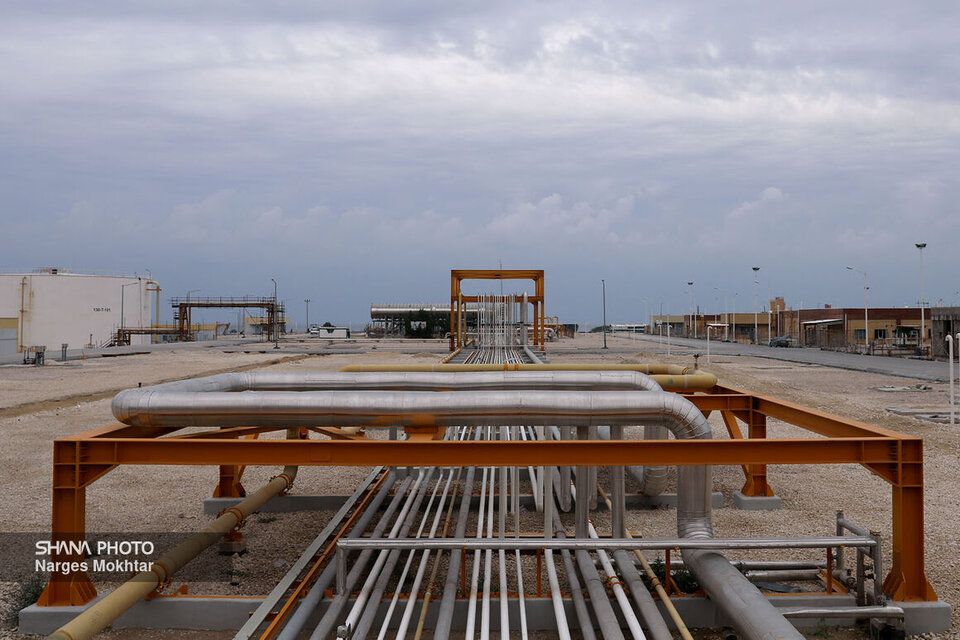Output Capacity
Iran’s refining and distribution industry has refined 2.2 mb/d of crude oil and gas condensate, supplied 112 ml/d of gasoil and 100 ml/d of gasoline, increased fuel supply by 23% and transferred 135 bl of petroleum products within a radius of 500 km over the past one year. This achievement has been made owing to the implementation of strategic projects and switch from fuel-based approach to profit-based approach.
In line with building a value chain in the refining industry, the 13th administration has approved construction of eight integrated refining/petrochemical complexes to run on crude oil and condensate. Today, Iranian companies are supplying nearly all necessary equipment required by the refining industry. Furthermore, Iranian technicians have the potential now to build refineries overseas. In addition to designing and manufacturing certain sophisticated equipment of the refining industry, Iran has managed to manufacture and fix turbines required in fuel distribution.
In light of the extensive plans envisaged by the 13th administration to develop the downstream industry with a view to value-added generation, numerous agreements and memorandums have been signed to develop the crude oil and condensate refining industry. In coming years, we must expect the refining industry capacity to grow, oil pipelines to be renovated, storage capacity to increase and fuel distribution fleet to be renovated.
Integrated Platforms, Key to Self-Sufficiency
Building integrated refining and petrochemical plants can result in preventing crude oil and natural gas sales, neutralizing sanctions, generating value-added and bringing about economic prosperity with a view to the development and growth of the petroleum industry. Compared with refineries, integrated refining/petchem plants have higher margins. In Iran, with a view to completing the oil and gas chain and creating higher value, a number of petrochemical plants have been built adjacent to refining facilities.
Undoubtedly, building integrated refining/petchem plants will help circumvent oil sanctions and create value-added and jobs, not to mention earn shareholders big profits. Minister of Petroleum Javad Owji has highlighted the priority given to integrated plants, noting that quantitative and qualitative upgrade of existing refineries has been also considered.
That was within such framework that MOUs were signed in August in the presence of President Ebrahim Raeesi for the financing of the Shahid Qassem Soleimani integrated plant with a capacity of 300,000 b/d of heavy crude oil, as well as the Morvarid-e Makran refinery with a capacity of 300,000 b/d of heavy and extra heavy crude oil.
Iran Eyes Ending Imports
The Shahid Soleimani plant is the first project integrating refining and petrochemical sectors with a view to pushing the country towards construction of integrated refining/petchem plants, generating value-added and preventing crude oil and natural gas sales.
This project is the main measure adopted by the 13th administration to head off a gasoline shortage crisis in the near future. Official data put gasoline production and consumption at rates very close to each other in Iran. Should this trend continue and the government fail to take action, Iran is likely to become a gasoline importer in the near future. Therefore, the Shahid Soleimani refining project is a measure taken to increase gasoline production capacity and supply daily gasoline needs and prevent imports. Furthermore, by supplying light fuel and petrochemical products, it would be instrumental in creating value-added in the downstream oil sector.
Arrangements were recently made for the construction of the Shahid Soleimani plant. During a meeting held with refining administrators, plans were devised for feasibility studies for the project and shareholders were specified. The land allotted to this project is 1,050 ha near the Bandar Abbas Gas Condensate Refinery, known commonly as the Persian Gulf Star Refinery. The shareholders would be the Persian Gulf Petrochemical Industries Company (PGPIC) (15%), Tadbir Economic Development Group (15%), Ahdaf Investment Company (15%), Tose-E Melli Group Investment Company (15%), Refah Kargaran Bank (15%), Bank Mellat (7.5%) and Bank Tejarat (7.5%). National Iranian Oil Refining and Distribution Company (NIORDC) will have a 10% share in the project. Iran’s gasoline consumption has exceeded 100 ml/d, up 14 ml/d year-on-year, underscoring the significance of building the Shahid Soleimani integrated plant for fuel supply over thecoming 10 years.
Gasoil has a significant share in the products of the planned integrated plant whose output would include gasoline (15%), propylene (11%), jet fuel (10%), ethylene (9%), fuel oil (8%), para-xylene (5%) and benzene (2%).
Morvarid Plant
The planned 300,000-b/d Morvarid refinery is Iran’s second step toward increasing the refining capacity and reducing crude oil and natural gas sales. The $7 billion project is to be financed jointly by Petroleum Ministry, Mofid Economic Group, Bank Mellat, Bank Melli, Bank Tejarat and Bank Parsian.
The refining facility would be established in Jask Port off the Gulf of Oman. Maximum use of homegrown equipment and feedstock privilege is a main feature of this project whose objective is to create value-added, prevent gasoline imports, increase the country’s refining capacity, create jobs, engage local firms, counter sanctions and boost resilience to sanctions.
The project is forecast to be completed by 2026. The Morvarid refinery would run on heavy and extra-heavy crude oil, 70% of whose products would be gasoline, gasoline, LPG and chemicals.
13 Projects in Progress
Over the past year, 13 refining and integrated refining/petchem projects have been unveiled, whose operation is still expected. They can totally process 2.27 mb/d of crude oil and gas condensate. A total $50 billion is estimated to be invested therein. They include the Khuzestan refinery, Anahita refinery, Mehr Khalij Fars integrated refining/petchem plant, South Adish refinery, Lavan integrated refining/petchem plant, Ghadir refinery, Shasta refinery, Morvarid Makran integrated refining/petchem plant, Entekhab refinery, Javid Energy Partov refinery, Pishgaman Siraf refinery, Setareh Sabz Siraf refinery, and Shahid Soleimani integrated refining/petchem plant.
So far, 30 refining projects have been envisioned in the country that have yet to become operational. Of them, 25 are destined to treat oil and 5 destined to treat condensate. These projects would need an estimated 4.3 mb/d of feedstock and a total investment of $90 billion.
Courtesy of Iran Petroleum


Your Comment